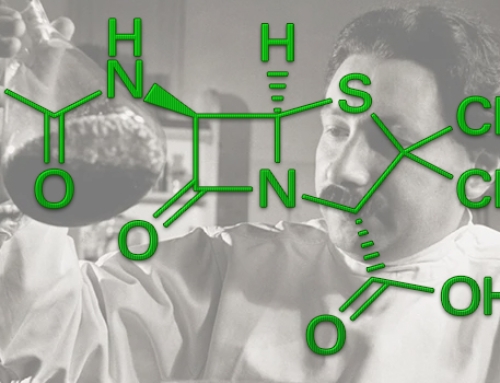Some have asked, that once the breakdown of a community starts to happen, what can we expect. One of those things that need to be mentioned are those diseases that were once thought to be eradicated or very rare, are now occurring more often. There have been countless articles about problems in the cities but I was unable to find any that addressed how to prevent and treat the diseases that are occurring or that may become a problem if conditions continue to be unhygienic.
Recently it was in the news that police officers and city workers in Los Angeles are being diagnosed with typhoid. This made me think that it is worth researching how to diagnose and treat diseases that used to be basically nonexistent in developed countries.
Regardless of how you feel about what is going on in this country, or the causes of the massive homelessness and despair in the nation’s cities, we now have a situation where it could pay off to be aware of the treatment options available.
I want you to have the knowledge to stay healthy or recover from an illness so I wrote this article.
Some of the diseases that I am going to discuss here may not have caused trouble yet but I am fearful that we are headed in that direction due to the extreme lack of hygiene and sanitation.
Typhoid
Typhoid is spread through water and food that is contaminated with fecal matter. In the old days, people did not always put outhouses in good places or maintain them. Houses that had indoor plumbing would often straight pipe waste into streams and rivers and it caused a lot of disease and illness. Recently, city workers in LA, San Fran and Seattle are being forced to clean up a lot of waste products from those living on the streets, particularly in the Skid Row area, and were exposed to typhoid.
While antibiotics can treat typhoid, some strains of the disease have become resistant or completely non-responsive to some drugs.
Treatment: azithromycin (Also known as a Z-Pack)
You can buy Azithromycin as a fish antibiotic. It has become the widely used drug for typhoid because it is effective against all known strains at the moment. Hopefully, typhoid does not become resistant to this drug since it is used for so many different illnesses and widely prescribed.
Cholera
Cholera was a common disease in the past. It is a bacteria that attacks the small intestine. Cholera can lead to dehydration quickly due to excessive vomiting and diarrhea. Symptoms can occur as soon as a few hours after infection or take as long as 5 days to appear.
A very concerning fact about cholera is that someone can be a carrier and show no major symptoms or illness. Cholera symptoms can be reduced through the use of some antibiotics. In some mild cases, doctors choose to let run their course as long as the patient can stay adequately hydrated.
Treatment: The Center For Disease Control recommends doxycycline for the treatment of cholera in adults and azithromycin for cholera treatment in children and pregnant women. Trimethoprim-sulfamethoxazole (Bactrim) and ciprofloxacin are also effective against cholera.
Dysentery
Dysentery is spread through food and water that are contaminated by fecal matter. The main symptom is severe diarrhea that may have blood present.
Treatment
The antibiotic metranazidole is the most commonly prescribed treatment for dysentery. This medication is often sold under the brand name Flagyl. You can get it like a fish antibiotic to keep in your medical kit.
- Drink lots of fluids to prevent dehydration
- Add electrolytes and small amounts of salt to water and other fluids to replace those lost through diarrhea
- Rest and avoid unnecessary contact with others
- Use a separate bathroom from others in your house if possible to decrease the odds of spreading it to others.
The Plague aka The Black Death
There are several different types of plague. The one most people have heard of is the Bubonic plague. Because all types could become present given the right conditions, I am going to describe all of them. Bubonic is the most likely but it is good to know about all of them just in case.
Bubonic
This is the variety of plague from which the other varieties can form. It is most often caused when someone is bitten by an infected flea. Symptoms include fever, chills, headache, and swollen lymph nodes. The bacteria multiply in the lymph nodes and swelling can be as large as a chicken egg.
Septicemic
Symptoms include fever, chills, weakness, abdominal pain, and shock. Victims may experience black skin where tissue is dying. This often occurs on toes and fingers as well as the nose. Sometimes this form of plague is a symptom of bubonic. One of the major differences is that septicemic plague can be spread by handling an infected animal and via bites from infected fleas.
Pneumonic
This form of the plague can be transmitted person to person via inhaled droplets. Victims may have watery and bloody mucus and trouble breathing. Pneumonic plague can develop from bubonic and septicemic plague due to the bacteria entering the lungs. Preventing the plague from developing to this degree is one of the reasons why it is so important to treat the bubonic form as early as possible. Pneumonic plague is extremely contagious. IT IS THE ONLY FORM TRANSMITTABLE DIRECTLY FROM PERSON TO PERSON.
Treatment of Plague: Plague is extremely serious but treatable with antibiotics. Since it is so serious, it is always recommended that you seek medical care from a trained professional. Antibiotics are usually administered via IV and then orally once improvement is seen in the patient. If you are in a situation where there is absolutely no medical care available, doxycycline or ciprofloxacin can be effective. Here is a link to the Center for Disease Control Chart of recommended antibiotics for plague in printable pdf form.
Typhus
There are three types of typhus but they have similar symptoms including fever, rash, headache, confusion, nausea, body aches, and vomiting.
Typhus is rare in developed countries which is why it made national news when people were diagnosed with it in Los Angeles. If an area has poor sanitation services and enough people producing garbage then you run the risk of a typhus outbreak. Los Angeles is likely experiencing the epidemic form
Murine Typhus
This is a flea-borne disease that thrives in areas where rats and other rodents are a major problem. This version people often get over without antibiotic treatment but it can still be a good idea to take a course of them anyway.
Epidemic Typhus
This version of typhus is spread through body lice. In medieval times this form of typhus was responsible for millions of deaths.
Scrub Typhus
This variant of typhus is carried by chiggers and is currently found in Southeast Asia. At the time of this writing, it is not a concern anywhere else.
Treatment: Doxycycline is the standard antibiotic treatment for murine, epidemic, and scrub typhus. When given early, it will quickly clear up a typhus infection.
All forms of typhus can develop into much more severe disease and lead to organ damage and death if left untreated. It is important to start treatment as soon as possible!
Are diseases mutating so that vaccines are not as effective?
There has been a lot in the news about measles and mump outbreaks. People are quick to start blaming this or that group as the root cause. I think the truth is probably a lot more complicated
Is it not possible that diseases are becoming resistant to vaccinations? Is it possible that it is a lot more complicated than just blaming people that do not vaccinate? Shouldn’t kids that get vaccinated be safe around kids that are contagious with measles? Is that not the point of a vaccine; that it will protect someone from getting a disease from someone that already has it?
I am not a doctor nor do I have any medical training but it does seem like since there are diseases and infections that become resistant to antibiotics that it is possible that a disease could mutate enough for vaccines to not work as effectively or even at all in some cases. That is a scary thing to consider but I think it is worth thinking about.
Measles
Measles is spread in the air via droplets when an infected person coughs or sneezes. Measles symptoms include a dry cough, high fever, red and watery eyes, flat red spots on the body, and small raised bumps.
Treatment of Measles
Once someone gets measles, there is no specific medication that works to cure it.
Ibuprofen or Acetaminophen for fever and pain
Since a high fever is one of the symptoms, doctors recommend taking an over the counter non-aspirin pain relievers such as ibuprofen or acetaminophen. NEVER GIVE ASPIRIN for measles to children or teens, even during the recovery period when the worst has passed. The risk of Reyes syndrome is high.
Vitamin A for symptom reduction
Vitamin A can help lessen the severity of the symptoms. If a doctor gives vitamin A to someone for measles it is in a large dose of 200,000 IU. You can get Vitamin A supplements at any drug store.
Vaccination of unvaccinated people within 72 hours of known exposure
Some doctors say that if someone is exposed to measles but has not been vaccinated, they can reduce the odds of developing the condition or at least lessen the severity if they received a vaccination within 72 hours of exposure.
- Avoid heavy activities and rest a lot
- Drink lots of fluids to prevent dehydration
- Wear sunglasses inside or draw the curtains if your eyes are sensitive to light. This may mean that a patient cannot look at a computer or tv without the brightness turned very low.
Mumps
A lot of those reading this have been vaccinated against mumps but we are starting to see cases of mumps once again. The mumps vaccine is one of the vaccines required to attend schools in the USA. Mumps is a viral infection that leads to swelling of the salivary glands that are near your ears. Besides swelling, victims often experience pain while chewing and swallowing, headaches, and loss of appetite.
Mumps is very contagious for 9 days after symptoms first appear so it is very important for those afflicted to be quarantined and avoid contact with others, especially anyone that has not been vaccinated.
Treatment: Like measles, there is no specific drug that will get rid of mumps. The condition must run it’s course. If someone is suffering from mumps then they need to rest a lot, stay hydrated, and take either ibuprofen or acetaminophen to help ease symptoms. Cold compresses can also be soothing.
Before going to the doctor with mumps symptoms it is advised that you call ahead because mumps is so contagious. This way you can reduce the risk of spreading it to other people at the office. Do not just walk into a clinic or emergency room unless you have no other choice.
Prevention
Good hygiene and sanitation practices are critical to preventing diseases. The main reason we are seeing a rise in old diseases is that the sanitation situation is closer to that found in the past when waste was thrown into the streets or straight piped into waterways.
When sanitation is low, rats and mice thrive which can lead to many of the diseases featured in this article.
Without the ability to wash yourself, health can decline rapidly.
The situation in Los Angeles, Seattle, and other major cities will continue to get worse until something is done about the sanitation and hygiene situation. That is a very hard problem when you have homeless populations of 5,000 or more in many areas. Keep in mind that it is just the figures that the public has access to. The true numbers could be much higher than that. It is impossible for the average person to know this. In addition, the numbers are changing every day.
People that live in the cities that are not homeless are also being exposed to the sanitation nightmare. Tourists and business travelers are also going into situations that they are not quite prepared for.
Here are some things you can do to protect yourself and your family if you live in an area where sanitation and living conditions are declining. I think that more people are going to find themselves in this situation before things start to improve. I just hope that the turning point is not a pandemic or a series of pandemics.
- Wash hands often and carry hand sanitizer with you when water and soap is not available. I am not a big fan of overusing hand sanitizer but in some cases, it can make a big difference.
- Avoid areas where you know there are sanitation issues even if it means adding extra time to your daily commute or travel.
- Before planning out a vacation or sightseeing trip you should take a look at the news for the area you are considering. There are plenty of cool places to go. I have read accounts from tourists that have planned out trips and really looked forward to them and then they wind up in the situation of being disgusted by filth or trying to protect their kids from the terrible things taking place in the streets.
- Wear gloves. There is a reason people used to do this more often. It was to avoid illness and not just about fashion.
- Keep wounds, scratches, etc, treated with antibiotic ointment and covered with a Band-Aid or other bandage. This will provide protection from infections that could be present.
- Avoid touching your eyes, mouth, and nose. This is especially important when you are out in public. If you must touch these areas, try to wash your hands first. This also helps prevent you from getting colds and other more minor but annoying illnesses.
- Keep your living area garbage free.
- Consider getting a cat to help reduce or eliminate rodent problems
- Treat all pets regularly for fleas and ticks.
- Use a soap that contains tea tree, eucalyptus, or peppermint oil. These essential oils help repel and even kill a variety of germs that can lead to bacterial and fungal infections. The oils also help prevent parasites such as lice, fleas, and ticks from making a home in your hair or on your skin.
- Shower daily if at all possible.
- Wear clothing once and wash it promptly if you are regularly in areas that are experiencing sanitation issues. While washing clothing daily is not realistic for many people, you can put clothes in a bag that can be sealed off with a drawstring or even use a garbage bag and then wash when you get a full load.
How To Help Others
- Listen to friends and loved ones when they have problems. Just spending a little time with them such as going on a walk in a park or meeting for coffee can make more of a difference in the long term than you might imagine.
- Avoid enabling bad behaviors that can lead to a life changing problem. Sometimes a little tough love is a good thing. We all want to make loved ones happy but sometimes what they want is not good for them. If you want to help someone and have the financial means to do so, buy them things that they need like food, clothing, etc. Items like that are harder to sell or exchange for illicit substances and will actually help them out. If you just give someone cash, then you might just be enabling their destructive behavior.
- Volunteer your time at places that are creating change in healthy ways. If there is a place where you can volunteer to be a counselor for example or teach a class that teaches others real skills or provides a healthy creative outlet to help them cope with issues, you might be able to do a lot of good for your community.
- Be aware of what is going on in your town. When people get together to come up with solutions before a problem escalates a lot, it is better. I am not saying this always works out, but the potential is there and you don’t know unless you try.
- Avoid yelling, screaming, name-calling, and unpleasantness when you go to authorities or government officials with complaints about homelessness, drug usage, public defecation, nudity, and sanitation issues. The situation that a lot of people are dealing with in their communities is enough to make the calmest person angry or upset but a lot of the time acting hostile and going to complain without thinking things through is not going to get you far and may actually hurt your chances of positive actions in the future. Town meetings can turn into a real mess when emotions are high and that leads to nothing getting accomplished.
Some people take a harsh view and say well just let them die. The problem will sort itself out.
Actually it won’t.
For starters, there are more people joining the ranks of the homeless every day. The economy is not that great and we have a nation that is highly addicted to pharmaceuticals and street drugs. We also have a system of support that distributes Narcan which can be used to counteract overdoses. This keeps people alive. There are plenty of people that have overdosed many times and been brought back from the brink of death.
The deeper issues that are causing this must be dealt with for there to be an end to the despair. Until we stop making addicts at an unprecedented rate, subsidizing bad behaviors, and encouraging people to come to areas that cannot support them, the conditions that lead to disease will continue.
In my area we have some excellent programs for those that are homeless but those programs can only support so many people and there are rules that must be followed. This has led to some coming to the area only to discover that they do not qualify for help because they are not a legal resident of the state of North Carolina. I am not talking about illegal immigrates either. I am talking about homeless people that are coming here from other states.
There are only so many resources in any city and when one gets the reputation of being the place to go for free stuff, resources get tight fast. Seattle is an example of this but residents of my small mountain county in North Carolina saw a significant homeless camp spring up when it was discovered that the help in our area was maxed out or they didn’t qualify due to residency or drug usage.
Many medical professionals have never seen real cases of some of the diseases that are popping up because they are considered so rare.
Doctor’s, nurses, EMTs, etc have a hard job and often suffer from PTSD even if they are not entirely aware of it. I certainly would not want to have to perform the daily tasks that they do to save lives on a daily basis.
Some diseases that are popping up are so rare that they can take longer to diagnose and treat because the symptoms mimic those of other less serious conditions.
I hope that hospitals and emergency professionals are encouraged to brush up on the diagnosis and treatment of some of the diseases linked to poor hygiene and sanitation.






